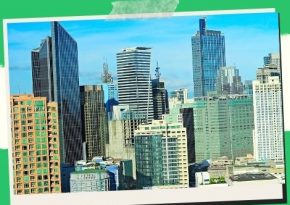
Industry Leaders Swing for Success at SHDA’s Prestigious Golf Tournament
Discover how SHDA’s Golf Cup is more than just a tournament—it’s a hub for innovation and collaboration.
PRESS RELEASE
Top Golfers from Real Estate Industry Recognized at SHDA Golf Cup 2025
PHILIPPINES – The Subdivision and Housing Developers Association (SHDA) Inc. successfully concluded its highly anticipated Real Estate Developers Golf Cup 2025 at Wack Wack Golf and Country Club, recognizing top golfing talents from the property development sector and offering a platform for more than 100 industry leaders to network and collaborate.
The tournament kicked off with a ceremonial tee-off led by Engr. Francis Richmond Z. Villegas, SHDA National President; Mr. John Paul Dy, SHDA Central Luzon Chapter President and Golf Tournament Overall Chair; Mr. Alberto Pascual, President and CEO of the Philippine Guarantee Corporation; and Mr. Charlie Brown Tan, President of the Organization of Socialized and Economic Housing Developers of the Philippines, Inc.
This year’s competition honored standout golfers in multiple categories. Richie Lirio was awarded the Low Net Champion, while Jason Barcelon claimed the Low Gross Champion title. In Class A, Max De Leon emerged as the Champion, followed by Ditto Reyes as 1st Runner-Up and Rico Comia as 2nd Runner-Up. Timothy Dalton Lim secured the Champion title in Class B, with Jing Panelo finishing as 1st Runner-Up and Andrew Lam as 2nd Runner-Up. Meanwhile, in Class C, Sherwin Uy took home the championship, while Shane Lloyd Bucat and Alberto Pascual placed as 1st and 2nd Runner-Up, respectively.
Special awards were also given to outstanding players. Noel Rios won Nearest to the Pin at 4 feet, Jason Tse Go claimed the Longest Drive (Hole #10) at 264 yards, Adrian Rios secured the Most Accurate Drive (Hole #13) at 1 yard, and Gary De Guzman achieved the Longest Putt (Hole #18) at 44 feet.
The SHDA Golf Cup continues to serve as a platform for fostering camaraderie among SHDA members, real estate developers, and key stakeholders, including representatives from the government, banking sector, and allied industries. Beyond competition, the tournament provided an avenue for industry leaders to discuss trends, innovations, and collaborative efforts that shape the future of housing and real estate in the Philippines.
“The real estate industry thrives on strong partnerships, and events like the SHDA Golf Cup create the perfect setting to build and nurture these relationships. It’s through collaboration and shared experiences that we continue to reinforce our collective goal of providing better housing solutions for Filipinos.,” said Engr. Francis Richmond Z. Villegas, SHDA National President.
Arch. Leonardo Dayao Jr., SHDA Chairman, shared his enthusiasm for the event’s success: “Events like the SHDA Golf Cup allow us to connect, collaborate, and work together on solutions that drive the future of housing and real estate in the Philippines. It strengthens our ties with members and industry leaders, helping us to advance our shared goals.”
Looking ahead, SHDA is preparing for two major upcoming events: its 55th Anniversary Celebration and the National Developers Convention, where industry leaders will gather to discuss key trends and challenges shaping the future of the real estate sector in the Philippines.
The SHDA Golf Cup 2025 was made possible through the generous support of its sponsors and partners, whose contributions played a vital role in the event’s success. The event was supported by 8990 Housing Development Corporation, Citihomes Builder & Development, Inc., Wee Community Developers Inc., Jose Aliling Construction Manager, Stronghold Insurance CompanyIncorporated, Cathay Land, Inc., Ciudades Development Corporation, Goldenpine Realty and Development Inc., Keyland, Lynville Land Development Corp., Moon Rabbit Ventures Inc./Uwi Homes, Noble Home Corp. (ServeQuest Inc.), Ortigas Land Corporation, P.A. Alvarez Properties and Dev’t Corp., Phinma Properties, Phirst Park Homes Inc., Prominence Properties Inc., Red Oak Properties, SM Development Corporation, Surewell Equities, Inc., Community Property Managers, Inc., Aluforms, Brahma Industrial Corporation, Davies, D’Square Plumbing, Inc., Dutchboy, Forthright Builders Inc., Godex PVC Pipes by DMC, Republic Cement, Sagada Construction Development Corporation, Bayad, Banco de Oro Unibank, Pag-ibig Fund, PBCom, Philippine Guarantee Corporation, Phinma Insurance Brokers, Inc., Security Bank, Fast Management Consultancy, Creative Ventures Travel & Tours, Pontefino Hotel, Rebisco’s Extreme and Choco Mucho, Srixon Cobra Puma, The Berry Blvd, Malaya Business Insight, BusinessMirror, Manila Standard, Manila Bulletin and The Manila Times.
# # #
ABOUT THE SUBDIVISION AND HOUSING DEVELOPERS ASSOCIATION INC., (SHDA)
The Subdivision and Housing Developers Association (SHDA), Inc. is the foremost industry association for housing development in the Philippines. With 350 members nationwide and eight regional chapters, SHDA maintains strong connections among the country’s top players, and a dynamic national network of small and medium developers.
As the largest and leading industry association for housing and urban development in the Philippines, SHDA has actively partnered with the nation’s housing policymakers, key shelter agencies, and stakeholders for over 50 years, thereby playing a pivotal role in developing and strengthening the industry’s capabilities. SHDA member developers are responsible for building 80% of the homes produced annually in the country, giving the organization unparalleled reach among Philippine homebuyers.
For more information, visit www. https://shda.ph/
 Insights
Insights
- SHDA Golf Cup 2025 successfully blended sport and strategy, allowing over 100 property leaders to connect in a relaxed, collaborative setting.
- The tournament brought top real estate executives and stakeholders together, including officials from finance, government, and construction sectors.
- Competitions across three player classes and special awards highlighted the skills and camaraderie within the real estate field.
- The event underscored SHDA’s ongoing efforts to foster meaningful industry connections, especially ahead of their 55th Anniversary and National Developers Convention.
- Golf served as a strategic networking platform, where casual competition evolved into key conversations about the future of Philippine housing.
 Conclusion
Conclusion
The SHDA Golf Cup 2025 wasn’t just a showcase of golfing excellence—it was a celebration of unity within the Philippine real estate industry. With standout performances, high-profile networking, and meaningful exchanges, the tournament reflected SHDA’s commitment to collaboration, innovation, and inclusive progress in housing development. As SHDA prepares for its major upcoming events, the golf cup stands as a shining example of how industry leaders can come together—both on the green and beyond—to build a better future for Filipino communities.
 Key Phrases
Key Phrases
- SHDA Golf Cup 2025
- Real estate industry networking
- Property developers golf tournament
- Philippine real estate leaders
- Golf and housing sector
- SHDA events
- Industry collaboration through sports
- Golf for a cause
- Housing development partnerships
- Real estate innovation and networking
 Best Hashtags
Best Hashtags
#SHDAGolfCup2025
#RealEstatePH
#GolfAndBusiness
#SHDAConnects
#PropertyDevelopersCup
#ForeTheFuture
#HousingIndustryPH
#RealEstateNetworking
#GolfWithPurpose
#BuildWithSHDA
Save/Share this story with QR CODE
Disclaimer
This article is for informational purposes only and does not constitute endorsement of any specific technologies or methodologies and financial advice or endorsement of any specific products or services.
 Need to get in touch?
Need to get in touch?

We appreciate your reading. 
1.) 

Your DONATION will be used to fund and maintain NEXTGENDAY.com
Subscribers in the Philippines can make donations to mobile number 0917 906 3081, thru GCash.
3.) 
4.) 
AFFILIATE PARTNERS

World Class Nutritional Supplements - Buy Highest Quality Products, Purest Most Healthy Ingredients, Direct to your Door! Up to 90% OFF.
Join LiveGood Today - A company created to satisfy the world's most demanding leaders and entrepreneurs, with the best compensation plan today.

 Business, Finance & Technology
Business, Finance & Technology





